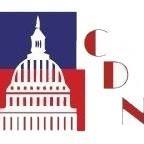



Monthly economic data rarely provide confident clarity, and this week’s was no exception. But the story is a good one nonetheless…the economy is doing just fine.
The immediate good news Wednesday was that the Fed’s preferred inflation measure, the Personal Consumption Expenditure Index, showed zero inflation. While only one month, it was a good month.
This bit of good news was quickly forgotten as the first guess at first quarter GDP showed the economy contracting 0.3%, reinforcing the murmurings of a recession pending or already unfolding. The Resistance was ready to pounce.
The Resistance soon deflated, however, as the details told a different tale. For one thing, national defense expenditures cut 0.33% out of growth. Defense spending shot up in the second half of 2024, so the Q1 2025 figure represented a natural retrenchment. But for this normal pullback the economy would have tread water in the first quarter.
But the big story in Q1 GDP was that offsetting solid numbers for consumption and investment, a huge surge of imports cut reported growth by a full 5 percentage points.
Why did imports surge? Because importers anticipated President Trump’s “Liberation Day” tariff wave and wanted to get their stuff in country before the tariffs hit. Importers “pulled forward” their planned foreign shipments.
Most of this imports influx went into inventory which the GDP accounts recorded as adding 2.25 percentage points, so the net GDP effect of the import surge was a 2.75 percentage point cut to reported growth. In short, absent the tariff surge the economy would have reported first quarter growth of about 2.5%, in line with recent quarters.
But wait! There’s more. Imports surged to get ahead of the tariffs. Thus, at a minimum, imports (and inventories) will fall by a like amount, mostly in the second quarter and some bleeding into the third.
It follows that whatever else happens, second quarter GDP likely begins with a 2-percentage point upward bump, so an otherwise normal quarterly growth will approach 5% with a little gravy left for Q3.
Of President Trump’s core economic policies, only the initial tariff effects appear in the data so far. The second shoe to drop – the beneficial effects of the trade deals and associated tariff reductions will be felt over years.
Another core policy, de-regulation, is underway with a vengeance, but the positive effects will again be felt over years. Burdensome regulations hamper investment as businesses are forced to adapt, often quickly and painfully. De-regulation’s effects play out over longer time frames as businesses adapt as economic conditions warrant. Reducing foreign trade barriers and domestic regulatory burdens play out in similar fashion, providing benefits for years to come.
The third pillar of Trump’s core policies, the tax cuts, are still pending, though Congress is making progress. Whatever beneficial economic effects follow will unfold later in the year and on into 2026.
In short, little of the GDP report reflects anything Trump and the Republicans have done so far, except for the tariff effects noted.
The government then released the monthly jobs figures on Friday. The storyline here was much simpler – just a solid report.
The commonly cited Establishment Survey reported a net of 177,000 jobs created; not boffo, but welcome. The Household Survey did far better with 436,000 net jobs created. The truth probably falls somewhere in between.
The bottom line is that that economy continues to chug along with only die-hard pessimists and the Resistance murmuring about a recession. As the trade deals get done and the tariffs come off, as de-regulation’s benefits accrue, and as it responds to better tax policies, the economy is poised for continued, sustainable solid growth.
JD Foster is the former chief economist at the Office of Management and Budget and former chief economist and senior vice president at the U.S. Chamber of Commerce. He now resides in relative freedom in the hills of Idaho.
The views and opinions expressed in this commentary are those of the author and do not reflect the official position of the Daily Caller News Foundation.
Content created by The Daily Caller News Foundation is available without charge to any eligible news publisher that can provide a large audience. For licensing opportunities of our original content, please contact licensing@dailycallernewsfoundation.org
Agree/Disagree with the author(s)? Let them know in the comments below and be heard by 10’s of thousands of CDN readers each day!
